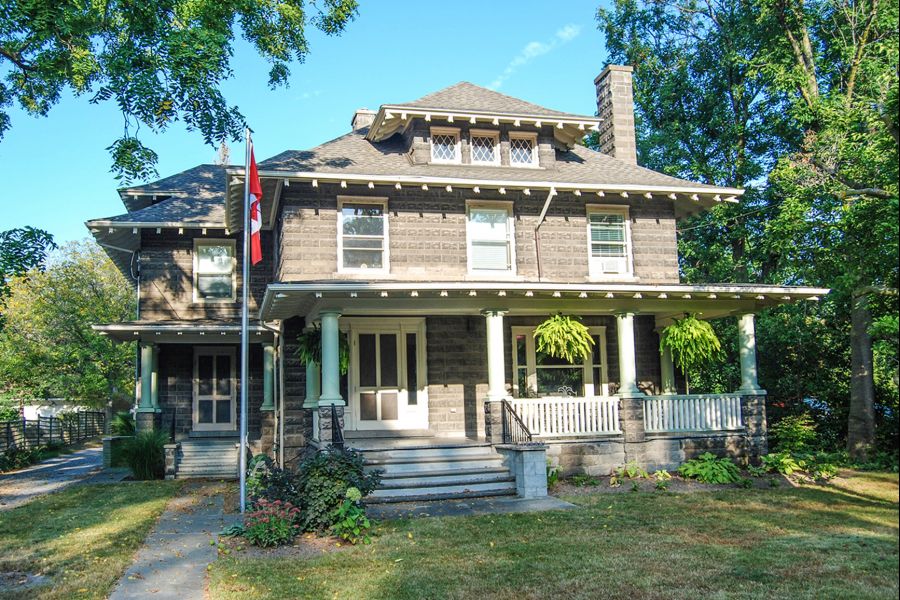It’s the first decade of the 20th Century and you are Dr. David Duggan of St. Davids. You are planning to build a new house and have engaged with an architect to develop the drawings.
From what you’ve seen and read, the work of that American fellow Frank Lloyd Wright tickles your fancy. You particularly like the practicality of the American Four Square building form, the deep overhanging eaves, the slight bellcast curves of the roof and the textured patterning in the wall cladding he used on the Porter House in Wisconsin. And Wright’s favoured L-shaped footprint also appeals.
Mind you, boxing the eaves is a little too severe, don’t you think?
You know, there’s really something about the exposed rafters and the low front dormers with diamond-shaped leaded glass windows that the Arts & Crafts folks put on their houses to dress up the facade.
As to its exterior, brick, wood and stucco are old-fashioned. This is to be a modern house and those new concrete blocks seem to fit the bill. Do you think textured patterning can be created with those?
And so, the doctor’s house was designed, built and completed around 1911.
The use of concrete block in the build was cutting edge and must have been a common topic of conversation around town. The block was made of the “new” portland cement and formed in the machine patented by Harmon Porter in 1900. In fact, it wasn’t until the Louisiana Purchase Exposition in St. Louis that concrete block was seriously considered as a building material.
Then here, in St. Davids a mere six years later, it was put to use.
To produce the textured patterning, the designer used two different blocks: a course of blocks with a rusticated face followed by a course of shorter smooth-faced blocks; this repeated all the way up the walls to the eaves. Of particular note, this block pattern was carried onto both the dormer and the tall, slender chimneys.
In 1911, the Duggan House would have been a show-stopper! Almost certainly unique in Niagara.
As the 20th century progressed and builders discovered just how fast and easy construction with block was, the demand for the material grew exponentially while its cost dropped. Reasonably priced, block-built houses, generally finish-clad with stucco, popped up all over North America.
At the same time, block became a dominate choice for commercial and industrial builds, and it was this that really pushed block out of fashion.
But back in 1911? The Duggan House was truly a “cock-of-the-walk.”











